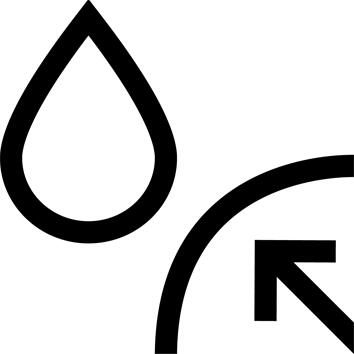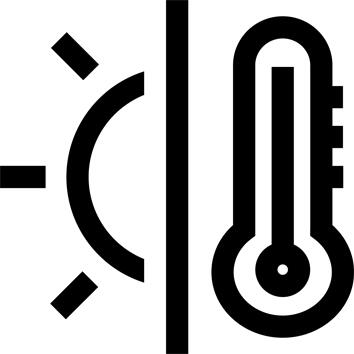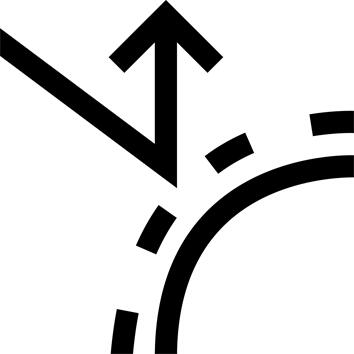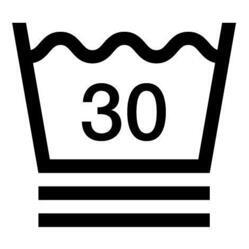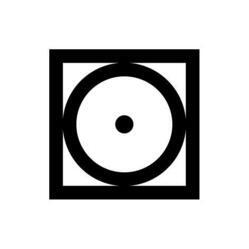3D hood
We've built this ski jacket with a hood featuring 3D tightening that's easy to adjust in a single movement. The cut of the hood is designed to follow the movements of your head without getting in the way. It is helmet-compatible.
The hood is pre-shaped with a high collar for face protection in extreme cold or windy conditions. The zipper flap is micro-perforated to facilitate breathing while protecting the face.
Sleeves
Wide, adjustable sleeves to slip over gloves to protect you from the snow and keep you dry and warm. Elastane cuffs with push-through fasteners ensure a hermetic seal at the glove/jacket junction.
Ventilation
To stay dry, it's important to have a waterproof jacket. But you don't want to get wet from perspiration.
Ventilation plays an important role in the evacuation of perspiration.
That's why we've equipped this jacket with 3 ventilation zips: two large zips under the arms (35cm in size L). And a quick-zip ventilation system on the front of the jacket, allowing you to open and close the ventilation very quickly.
Pockets
- Two hand pockets with waterproof zips.
- One inside breast pocket with waterproof zip.
- One outside breast pocket with waterproof zip.
- One left shoulder pocket with waterproof zip.
- Two inside mesh pockets with quick access.
Cut
The loose fit and preformed sleeves are there to free your movements and allow you to ski in total freedom.
We designed this jacket with 2 components: one to guarantee good fluidity and freedom of movement, and one for abrasion resistance.
What should I wear under my ski jacket?
To keep you warm and dry, apply the 3-layer rule: ski underwear and an undershirt layer 2 to keep you warm, and a ski jacket layer 3 to protect you from the elements.
Layer 1 keeps you dry by transferring perspiration from your skin to the other layers.
Layer 2 provides warmth, as in a down jacket or fleece pullover.
The third layer
Protection from the elements (snow, rain and wind) by keeping them out (while still allowing perspiration to escape, so you don't get "wet from the inside"). So, ideally, it's waterproof AND breathable. The third layer (or layer 3) can also be used for insulation, in the case of lined pants or jackets, thus complementing the action of the second layer (or layer 2).
How do you prevent snow from falling in?
The snow skirt is a waist protection system that snaps onto the bottom of the ski or snowboard jacket. It prevents snow and air from entering while skiing or snowboarding, particularly in the event of a fall. It can be fastened to pants by means of 3 press stud loops.
Water-repellent
A fabric's water repellency is its ability to let water slide off its surface without absorbing it. This means the fabric doesn't become waterlogged, remaining light, breathable and warm. Water repellency is achieved by a treatment applied to the outside of the fabric. This treatment needs to be renewed over the life of the garment (we recommend every 3 washes). All Wedze jackets are water-repellent.
Component impermeability
We measure a fabric's resistance to water pressure expressed in mm water column (test based on ISO 811). The higher the pressure, the more waterproof the fabric. A component with a waterproof rating of 15,000 mm will therefore withstand the pressure exerted by 15,000 mm of water.
Component breathability
Pour savoir si un tissu est respirant, on mesure sa résistance évaporative RET (test basé sur la norme ISO 11092). Plus la résistance est faible, plus le tissu laisse s’échapper la vapeur d'eau générée par le corps en activité et plus il est respirant. Par exemple : RET < 9 = tissu extrêmement respirant / 9 < RET < 12 = tissu très respirant / 12 < RET < 20 = tissu respirant / RET > 20 = tissu peu ou pas respirant.
What is a membraned or coated component?
The coating is like a paint applied to the inside of the fabric, making the component waterproof yet breathable. The membrane is a kind of very thin plastic film (polyurethane) that requires a lining to protect it and make the component waterproof yet breathable. It has the advantage of being more flexible, lighter, more resistant and often more breathable than coating.
How do you make a waterproof garment?
A garment's waterproofness is linked to its component, the waterproofness of the seams and the design of the assembly.
Then we carry out shower tests on our garments.
Waterproofing / Shower test
This garment has been validated in a shower test under 100L of water/m²/hour for 3 hours. This test reproduces the conditions of a heavy mountain storm.
How do you make a breathable garment?
In addition to the breathability of our fabrics, we use technical solutions (zips, vents, mesh, etc.) to improve the overall ventilation of our jackets and pants designed for freeride skiing. These ventilation systems both regulate the temperature inside the garment and facilitate the evacuation of perspiration generated by the body during exercise.
Your product is repairable
This product is repairable.
During the warranty period, we will repair your product free of charge. Whether it's snags, seams, zips, etc. These solutions will be proposed to you in your usual store.
If, however, we are unable to repair your product (non-repairable production defect), you will be able to exchange it or have it refunded.
What is the RECCO® System?
100% of our freeride ski jackets and pants are equipped with the RECCO® system.
With RECCO® technology you can be located in the event of an avalanche accident. Equipped with RECCO® reflectors, a buried person can be located quickly and accurately by the rescue services using the RECCO® detector. RECCO reflectors do not replace the use of a avalanche beacon. Complementary in function, RECCO® technology increases the chances of being found in time.
Washing your waterproof garment tutorial
We advise you to follow this protocol every time you wash your garment, in order to preserve all its technical characteristics.
Link: https://youtu.be/rh4GLwALgBM
After three washes, we recommend reactivating the water-repellency by spray or impregnation treatment.
To help you choose the right size
The model wears a L and measures 180 cm.
Her measurements are:
Waist: 85 cm
Hips: 100 cm
Chest: 100 cm
